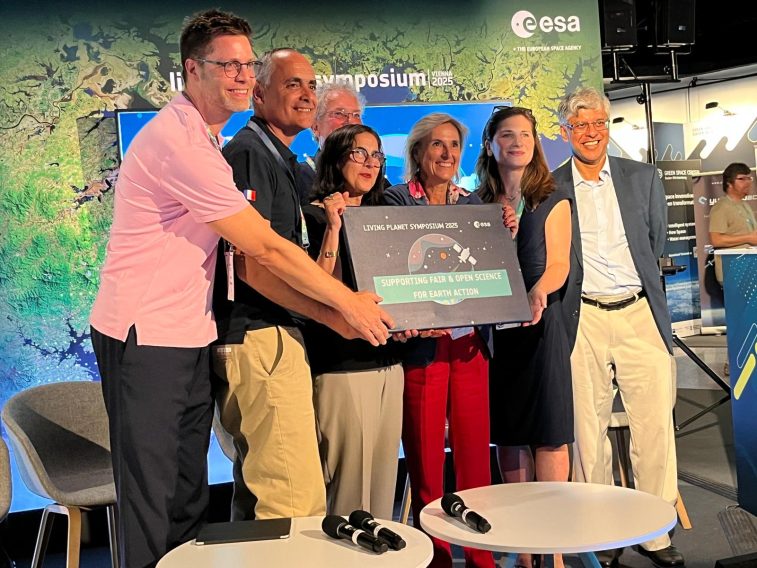During the ESA Living Planet Symposium 2025 in Vienna, Austria, a key milestone in the roadmap towards implementing FAIR Open Science in support of the ESA Science Strategy was marked with the Open Science Partnership Ceremony, held on Thursday, 26 June. The event brought together representatives from ESA, ESA Member States and international partners to reaffirm their collective commitment to Open Science as a driving force for innovation and impact in EO.
The ceremony opened with a powerful statement from Simonetta Cheli, ESA’s Director of Earth Observation Programmes, who emphasized the strategic importance of Open Science in ESA’s renewed EO Science Strategy. In her statements, she stressed that FAIR and Open Science are essential for Earth Action, underpinning scientific trust, fostering innovation, and creating new opportunities for international cooperation.
A Shared Vision for FAIR and Open Science
Representatives from CNES (France), DLR (Germany), and the UK’s National Centre for Earth Observation (NCEO) shared national perspectives on enabling open, interoperable, and impactful science. The strong backing from these space agencies underscores a European consensus: to maximize the value of EO data from ESA and national missions, collaboration must go hand-in-hand with open access, reproducibility, and interoperability across ESA and national infrastructures.
Launch of the Open Science Persistent Demonstrator – Pilot 2
The ceremony concluded with the launch of Pilot 2 of the Open Science Persistent Demonstrator (OSPD), a joint initiative sponsored by ESA, NASA and the EC and managed by the Open Geospatial Consortium (OGC).
Pilot 2 is directly aligned with the requirements of ESA’s EarthCODE – a strategic initiative to enable adoption of FAIR and Open practices in ESA-funded activities on Earth Science. The OSPD Pilot 2 serves as a testbed for integrating national EO science platforms into a European federated, interoperable open science environment.
EarthCODE and APEx: From Research to Action
At the heart of ESA’s strategy are two synergistic initiatives:
- EarthCODE – a collaborative open development environment supporting fundamental research in Earth Sciences by providing computational resources, FAIR and Open Science tooling, and effective storage and discovery mechanisms for research outputs.
- APEx – the Application Propagation Environment, which builds on research outputs to develop higher-TRL, user-ready applications.
Together, they support the full cycle of EO innovation, from scientific discovery to operational deployment. This approach ensures that scientific results don’t just stay in papers but are translated into usable services that support real-world decisions—whether for climate action, disaster response, or environmental management.
Looking Forward
The Open Science Partnership Ceremony at LPS 2025 was more than a symbolic moment—it was a reaffirmation of ESA’s commitment to community-driven innovation and scientific excellence. By fostering partnerships across agencies, academia, and industry, ESA is building the foundations of an open EO ecosystem that is reproducible, trusted, discoverable, and truly global.
As Pilot 2 of the OSPD gets underway and EarthCODE continues to expand, the EO community is entering a new era where open, FAIR, and federated science is not just a principle—but the pathway to impact.

